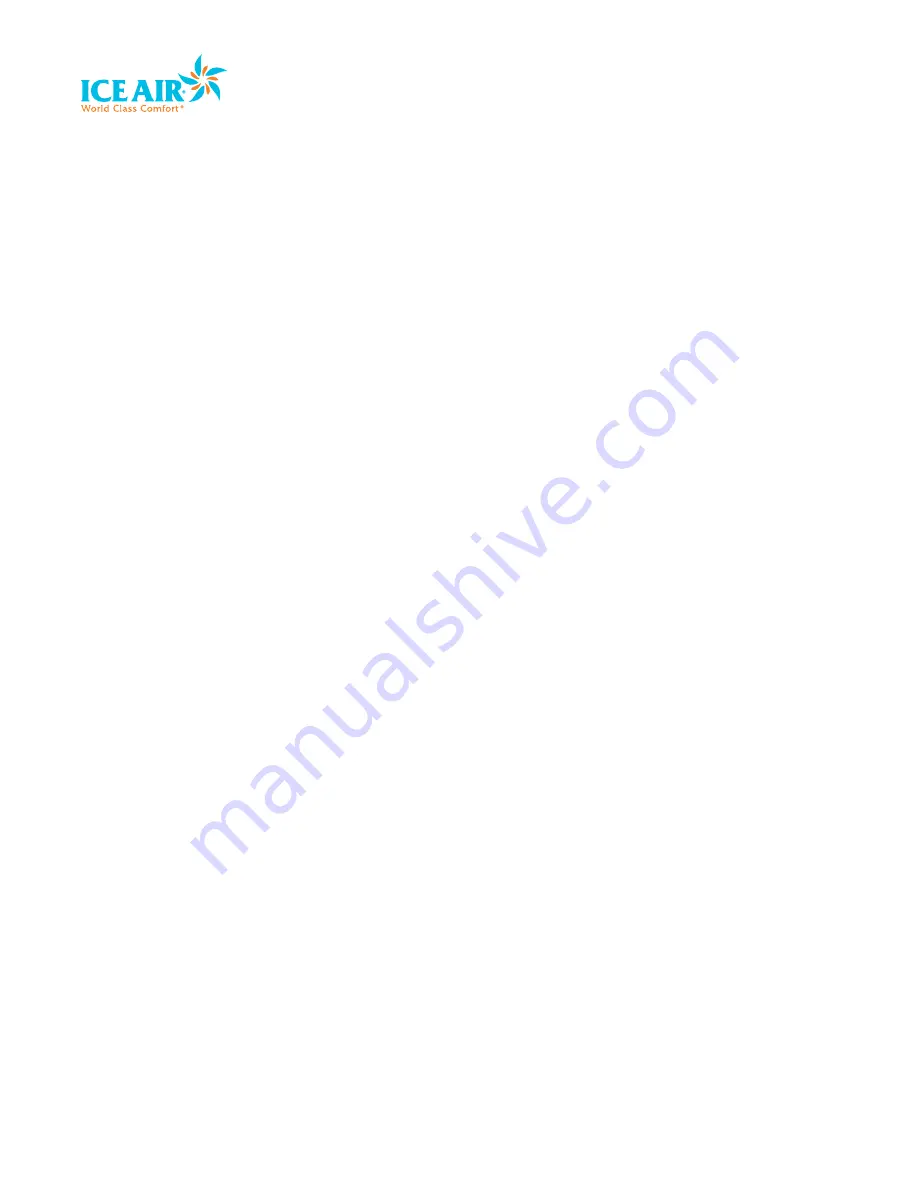
Due to ICE AIR’s ongoing product development programs, the information in this document is subject to change without notice.
7
Commercial Water Loop Application
Commercial systems typically include a number of units connected
to a common piping system. Any system or unit piping maintenance
work can introduce air into the piping system. Therefore, air
elimination equipment is a major portion of the mechanical room
plumbing. In piping systems expected to utilize water temperatures
below 60°, 1/2” closed-cell insulation is required on all piping
surfaces to eliminate condensation. Metal-to-plastic threaded joints
should never be used due to their tendency to leak over time.
Balancing valves, flow control valves, motorized solenoid valves and
variable speed pumping systems may also be used.
The piping system should be flushed to remove dirt, pipe shavings,
chips, and other foreign material prior to operation (refer to “System
Cleaning and Flushing” section). The flow rate is usually set between
2.25 and 3.5 GPM per ton of cooling for most applications of water
loop heat pumps. To ensure proper maintenance and servicing, P/T
ports are imperative for temperature and flow verification, as well as
performance checks.
Water loop heat pump (cooling tower/boiler) systems typically utilize
a common loop, maintained between 60 - 90°F. The use of a closed
circuit evaporative cooling tower with a secondary heat exchanger
between the tower and the water loop is recommended. If an open
type cooling tower is used continuously, chemical treatment and
filtering will be necessary.
System Start
System Cleaning and Flushing
Cleaning and flushing the unit is the most important step to ensure
proper start-up and continued efficient operation of the system.
Follow the instructions below to properly clean and flush the system:
1. Verify that electrical power to the unit is OFF.
2. Verify that supply and return riser service valves are closed at
each unit.
3. Fill the system with water, leaving the air vents open. Bleed all air
from the system, but do not allow the system to over flow. Check
the system for leaks and make any required repairs.
4. Adjust the water and air level in the expansion tank.
5. With strainers in place, start the pumps. Systematically check
each vent to ensure that all of the air is bled from the system.
6. Verify that make-up water is available and adjusted to properly
replace any space remaining when all air is purged. Check the
system for leaks and make any additional repairs if needed.
7. Set the boiler to raise the loop temperature to approximately
85°F (29.4°C). Open the drain at the lowest point in the system.
Verify that make-up water replacement rate equals rate of bleed.
Continue to bleed the system until the water appears clean or for
at least three hours, whichever is longer.
8. Completely drain the system.


































